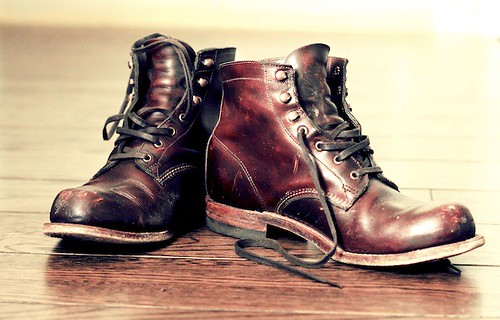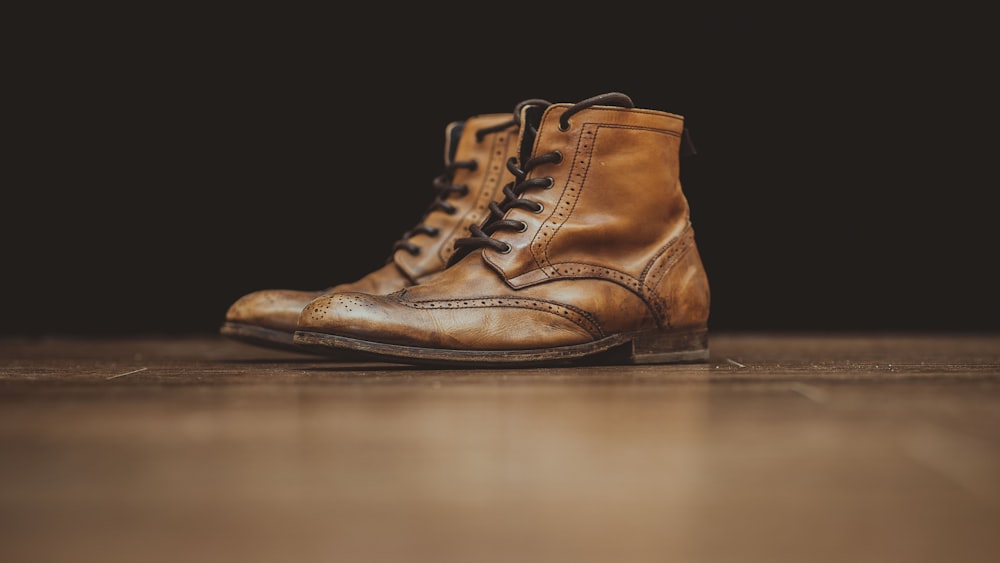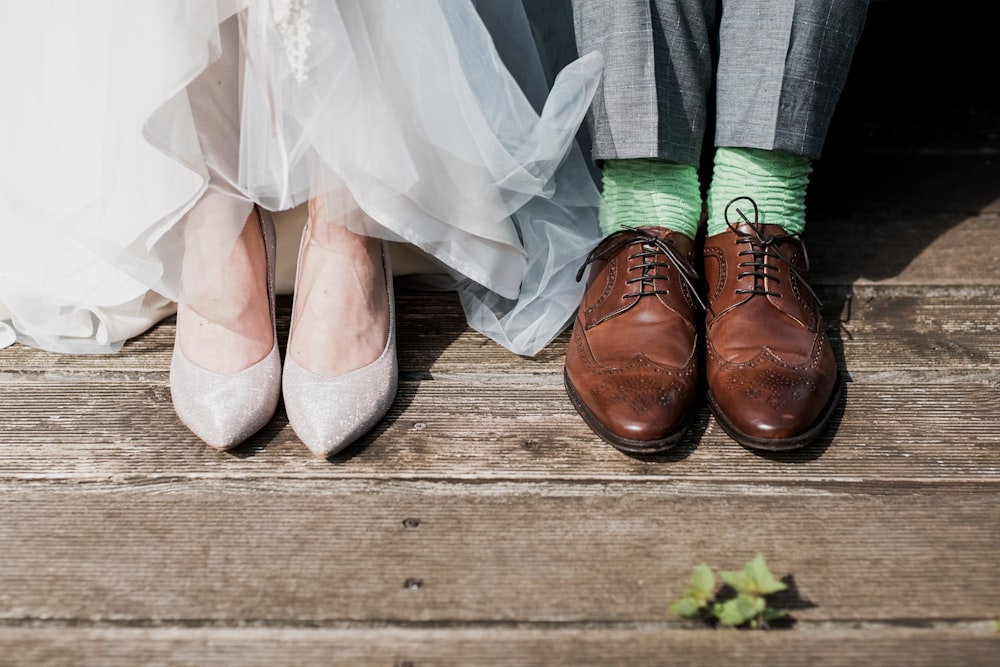How to Get Mould Out of Shoes in Simple DIY Steps

We've all pulled out a pair of shoes from storage only to be met by an intense and unpleasant mouldy smell. If your first instinct is to throw them away don't resign yourself just yet. There's still a good chance you can save your shoes.
All mould and mildew problems can be traced back to moisture. Choosing to wear shoes that are moisture-proof, like these 100% waterproof Vessi shoes, can resolve that problem. But if you want to work with the shoes you already have, there are still other things you can do.
Here's how to get mould out of shoes to restore their former life.
What Causes Mould Growth on Shoes?
Mould is a rough microscopic fungus that grows and spreads on damp surfaces. It can grow on almost anything with excessive moisture, from walls to fabrics and shoes. However, this pesky fungus can also accumulate for other reasons like a hot climate, high air humidity, poor ventilation, and improper maintenance.
Shoes are particularly prone to mold growth. The dark, warm, damp environment is ideal for the fungus to thrive. For one, insoles are susceptible to moisture from perspiration while the outer side of the shoes is usually exposed to the elements. This means that shoes that aren't dried properly end up becoming the perfect place for mould growth.
Mould Spores Spreading
You might also come into contact with mold spores outdoors and inadvertently carry them with you. If, for example, you step on decaying wood mould spores can build up on your shoes and clothes. If there's any moisture in your shoes, the spores will keep on growing, eventually forming that annoying sticky layer on your shoes.
How to Get Mould Off From Shoes
Depending on how much there is you can normally get rid of mould from shoes using the following methods:
-
A disinfectant such as vinegar, alcohol, baking soda or tea tree oil.
-
A vacuum cleaner, especially for canvas shoes.
-
A brush.
Before you start removing mould from your shoes it's important to get the required equipment to keep you safe. Make sure you're wearing a mask so you don't breathe in the mould spores. They can cause some health risks such as coughs, allergies, wheezing, and asthma. You also want to make sure you're wearing gloves to keep your hands safe from the products you'll be using.
Once you have all your equipment gathered it's useful to know different removal techniques based on the material of your shoes. Below we're sharing a few examples.
How to Get Mould Out From Leather Shoes

Image Source: unsplash.com
What You'll Need
-
Soft-bristled brush
-
Detergent
-
Water
-
Rubbing alcohol
-
Bucket or container
-
Cloths and sponges
Process
1. Start by taking the shoes and tools outside (or in a well-ventilated area) to minimize the risk of inhaling the spores.
2. Use a soft brush to first clear out the visible spores on the shoes. You can use a dry, clean cloth if you don't have a brush. If the mould is growing inside the shoes as well, use a smaller brush to get to the inner corners. Whenever possible, remove the insoles and wash them thoroughly.
3. Mix equal parts of plain, cold water and rubbing alcohol in the bucket. For example, if you add one cup of water, you'll also add one cup of alcohol.
4. Soak the cloth in the mixture, then wipe down the shoe surface thoroughly. You might need to use a cotton swab to reach the smaller spaces.
5. Dip a new clean cloth in plain water and wipe down the leather.
6. As the shoes air dry, make a warm water and mild detergent solution. You can also use leather saddle soap if you have that.
7. Use a clean cloth dipped in the solution to wipe down the surface of the shoe.
8. Next, wipe off the excess soap residue with a cloth and plain water, then allow the shoes to air dry again.
9. Once they're completely dry, you can use a leather conditioner to restore the shoe's texture. If you're ever in doubt however it's useful to check your shoes' care instructions to find out if you should skip any of the steps above.
Bonus tip: This YouTube video does a great job of showing each step in detail.
How to Get Mould Out From Nubuck and Suede Shoes

Image Source: unsplash.com
Suede is a type of leather with a more fluffy texture and a napped finish. Nubuck on the other hand is top-grain leather that has been buffed down on the grain side, usually with a velvety texture.
The good news is that both materials use the same method to remove mould. Here's how:
What You'll Need
-
Rubbing alcohol
-
Petroleum jelly
-
Water
-
Cloths and sponges
Process
1. If the shoes are only lightly mouldy, apply a thin layer of petroleum jelly to the affected areas.
2. If you have significantly mouldy shoes, mix equal parts of rubbing alcohol and water then apply to the affected areas with a cloth or sponge.
3. Use a moist, damp cloth or sponge to rub the petroleum jelly or alcohol on the shoes in gentle circular motions.
4. Let the shoes air dry away from direct sunlight and heat.
5. When they're completely dried, brush them gently using a suede or nubuck brush to help restore the smooth texture.
Pro-Tip
Always do a patch test before applying anything on suede and nubuck shoes. These types of shoes have been known to react to certain cleaning products and change color.
How to Get Mould Out From Canvas Shoes
Mould and mildew can also affect canvas shoes, making them discolored or even unusable in extreme cases. Here's how you remove mold from canvas shoes:
What You'll Need
-
Soft brush
-
Vacuum cleaner
-
Rubbing alcohol
-
Water
-
Bucket
-
Cloths or sponges
Process
1. Use a soft brush to scrub the loose mould layers off the surface of your shoes.
2. Use a vacuum cleaner to clear out all the remaining mould buildup on the fabric. Ensure that you vacuum all the edges, including the inner soles.
3. Mix equal parts of water and rubbing alcohol in a bucket.
4. Dampen a cloth or sponge in the solution and use it to wipe down the remaining mould.
5. Once you have removed all the signs of fungus, allow the shoes to air dry under sunlight.
How to Remove Fungus From Shoes
Fungus in shoes is one of the biggest contributors to bad odors and even foot fungus infections. Here's how you can keep it in check:
-
Change your socks regularly, especially if your wear the same shoes, to allow them to dry out and prevent excess moisture from building up.
-
Consider using a disinfectant shoe spray to wipe out any traces of fungi.
-
Consider a vinegar and baking soda solution to spray the insoles. You can use a spray bottle for this.
-
Leave your shoes out in the sun from time to time. UV light is great at fighting mould spores. However, some materials, such as leather, need extra caution as they can easily get damaged with sunlight.
How to Prevent Mould Growth on Shoes in Storage

Image Source: unsplash.com
Closets are generally ideal habitats for mould to thrive because of high humidity and lack of sunlight. That said, the tips below can help prevent mould from growing in your closet in the first place:
-
Keep It Cool and Dry
If you come back home with wet shoes, allow them to dry completely before storing them. This also applies to your laundry - don't hang it in your closet if it's still wet.
-
Keep It Clean
Dirt and debris promote the growth of mould. Ensure everything is clean before putting it in the closet. Also, add cleaning your closet to your monthly to-do list. Consider spraying a mixture of baking soda and vinegar regularly to kill any existing spores and prevent their growth.
-
Don't Store in Plastic
Plastic traps humidity, which promotes the growth of mould.
-
Close the Door
If your home has high air humidity, make sure the closet doors stay closed as much as possible. This prevents damp air from entering. You can also consider leaving the closet lights on for extended periods. The bulb's warmth can help keep the space dry.
-
Put Silica Gel Packs Inside
If you don't have a dehumidifier to keep things cool in your house, you can leave silica gel packs in the closet. These help maintain dryness inside and regulate the internal temperature. Switch the packs out once or twice a month, depending on where you live.
Frequently Asked Questions about Mould on Shoes
1. Is mould on shoes harmful?
Yes. On top of the strong smell from mouldy shoes, inhaling the spores can lead to respiratory complications. The risks are bigger for people with preexisting conditions. Second, mouldy shoes can also cause fungal nail infections. Make sure that your shoes remain clean and dry to keep mold growth at bay.
2. Does sunlight kill mould?
Sunlight kills mould in two main ways. First, UV radiation is great at removing mold. Second, heat plays a huge role in eliminating mildew and drying out surfaces. However, you still need to keep in mind that overexposure to direct sunlight can ruin your shoes' material.
3. Does vinegar kill mold?
Yes. Vinegar has a pH of 2.5. It's so acidic it can prevent mold growth.
4. What does a musty smell imply?
Generally, a musty smell suggests the presence of mold, mildew and fungus. By the time your nose is catching the smell, there's already significant mold growth somewhere. Airing out the space, regulating the environment, and a thorough clean should help clean out mold properly.
Featured Image Source: flickr.com

